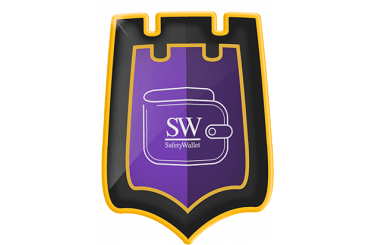
HEALTH AND SAFETY TRAINING
Employers are required by law to ensure that they provide a workplace that is safe and free from harm to the safety, health and wellbeing of employees, as far as reasonably practicable. Each organisation must have a dedicated health and safety team with the necessary training and knowledge to be able to fulfil their responsibilities.
If you have any questions, please feel free to speak to one of our Experts
Importance of Occupational Health and Safety Training
Health and safety is sometimes seen as difficult, intimidating and irritating with sets of rules that must be obeyed. However, through comprehensive training, the subject can be easily understood and then becomes an extremely simple concept to grasp.
- That all employees and visitors are protected against avoidable injury, disease, disability or even death.
- That fires, as well as unanticipated accidents and catastrophes that pose a risk to the organisation and its employees, are minimised.
- That the company assets and broader surroundings are protected.
- That employees are not subjected to chronic occupational diseases that are preventable.
- That the business is protected against any unnecessary insurance claims and/or financial losses that stem from illnesses and injuries that could have been avoided.
However, while employers have this responsibility, they do not carry it alone because the law also requires employees to take care of their own safety and the safety of those around them as well.
The best way to ensure a safe working environment and to provide employees with the necessary skills and knowledge to safeguard themselves and others is to provide Occupational Health and Safety training or OHS training.
Organisations, companies, employers and departments require that employees be trained in different safety-related courses that increase their knowledge of safety practices. It also makes them aware of health and safety factors in the workplace and teaches them how to handle certain situations.
The Importance of Health and Safety Courses and Workplace Safety
- Obligations that are legal and binding.
- The fact that communities expect employers to safeguard their employees.
- Insurable costs that include worker's compensation which is proven to be linked directly to the overall occupational health and safety performance.
- Uninsurable costs consist of lost-time injuries, loss of productivity, replacing staff members and several others.
- The costs to the community include, but are not limited to, health services, rehabilitation and several more.
- The costs to employees because their quality of life has been reduced because of workplace injuries and/or diseases.
Benefits of OHS Training for Companies
- The provision of OHS training is mandatory for companies in South Africa. Non-compliance can result in penalties, fines and even imprisonment, resulting in costs that are far higher than that of the costs involved with providing training.
- It is best practice and forms part of safe working methods and procedures.
- It provides companies in South Africa additional points towards their OHS and skills development of employees.
- It gives the employer peace of mind because occupational health and safety training makes employees more aware of the hazards and risks in the workplace, leading to the minimisation of these risks and the reduction of incidents.
- OHS training is a requirement for companies to obtain tenders.
- It ensures productivity and skills development because employees can be taught in their language, which will ensure that quality work is ensured. It also boosts the overall efficiency of employees, translating to less time spent on resolving mistakes.
- It results in cost reductions because fewer work-related injuries and accidents occur, helping the employer save on Injury on Duty (IOD) claims, illnesses, deaths, damage to property and equipment, staff turnover and many others.
Benefits of OHS Training for Employees
- A sense of responsibility because employees feel a duty of care towards themselves and others who work around them, leading to employees aiming to achieve the highest level of safety in the workplace.
- It can help employees clearly define their roles and responsibilities.
- It boosts productivity and morale and also instills trust and confidence in the employer.
The Difference Between On-site and Online Training
- Ensure that employees are not injured while they are at work and that they do not become ill because of any work activities, products, substances or processes.
- Develop and maintain a strong health and safety culture where occupational health and safety is not seen as a chore but rather where it becomes second nature.
- Determine where and how health and safety can be improved.
- Meet their legal duty to safeguard the health, safety and well-being of employees.
- Contribute towards overall employee competence where health and safety is concerned.
- Avoid the distress associated with ill-health, accidents and incidents.
- Prevent financial costs of accidents and occupational ill-health.
Advantages of Online Training
- Flexibility is one of the obvious benefits of online learning because individuals can choose classes as it fits their schedule. It is also easier to organise online sessions and to record sessions for those who could not attend at a certain time. It also makes it easier because students can rewind and re-watch sessions, allowing for improved retention.
- Online learning is more cost-effective because it does not involve travelling costs, accommodation, meals and other factors.
- There are increased opportunities for global networking because there are no geographic restrictions.
- It allows students to learn at a pace that is comfortable for them.
- There is a wide range of courses to choose from.
Disadvantages of Online Training
- The technical know-how involved with using online platforms and technology can be a setback for those who either do not have access to a computer or internet connection or those who do not know how to use their tools.
- There can be distractions in the home environment that would not have been present in a classroom.
- Students cannot always carry out practical courses online, especially where physical participation is necessary, such as first aid courses.
Advantages of On-site Training
- It provides the perfect opportunity for personal networking.
- It allows for teachers and students to foster professional relationships.
- There is real-time interaction which can be beneficial for optimised learning.
- There are fewer distractions.
Disadvantages of On-site Training
- There is truly little flexibility and there are rigid timetables.
- The courses are more expensive and include additional costs such as accommodation, travel, meals, etc.
- The instructor cannot create a customised work plan, which means that all students are treated the same and those who may have special learning needs will not be able to keep up.
Return on Investment if Training is Conducted Through SafetyWallet
- Accreditation with the necessary training authorities in South Africa.
- Whether the training provider that offers health and safety courses has a good reputation and a good track record in offering training to large, reputable organisations. Employers must request reference letters to determine the validity of the provider's services.
- Whether the health and safety courses can be tailored to the company's unique industry and needs. There is no one-size-fits-all because what is applicable for retail will not apply to the chemical industry. There may be some similarities but there are also unique considerations for each industry.
- The provider must offer a holistic approach, not only a single aspect. Apart from providing health and safety training, the supplier should be able to assist the company in maintaining its overall health and safety compliance.
- An in-depth analysis of the training requirements
- Dedicated Skills Development Facilitator (SDF)
- Annual Workplace Skill Plan (WSP)
- Skills Development Levy (SDL) re-imbursements
- B-BBEE Learnership assistance
- Tax incentives for qualifications, bursaries and learnerships
- COVID-19 related training
- Legislative updates delivered weekly
- A comprehensive monthly newsletter
- Forklift training
- Overhead Crane novice and re-certification courses
- Basic Fire Fighting training course
- Working at Heights: Fall Protection Planner
- Working at Heights: Fall Arrest Systems with Rescue
- Basic First Aid training ( Previously known as Level 1 )
- Intermediate First Aid ( Previously known as Level 2 )
- Advanced First Aid ( Previously known as Level 3 ) and several others





